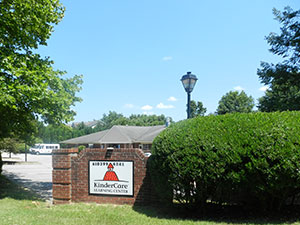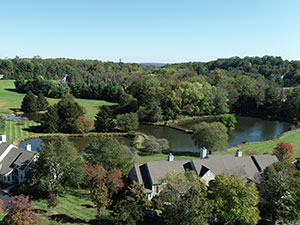Design Elements — Vary Lot Types
Lots of varying sizes within the same subdivision can be grouped together in numerous ways to provide for enhanced sense of place and community, and to best take advantage of the site's existing conditions. Additionally, flexible standards for conservation subdivisions can help provide "missing middle housing" by permitting and/or encouraging smaller lots and smaller units.
A type of conservation subdivision design methodology coined by local planning authority Randall Arendt called Growing Greener: Conservation by Design identifies four different lot typologies that could be used in combination with each other within a subdivision:
- Density-neutral lots — typical lot size of 0.5 to 1 acre, 50% of net tract area provided as undivided open space
- Estate lots — typical lot size of 4+ acres, 50% density reduction, no common open space required
- Country properties — maximum density of 10 ac. Per principal dwelling, 70% density reduction, no common open space required
- Hamlet or village lots — typical lot size between 6,000 to 12,000 SF, base zoning density x2, 70% undivided open space
- Age targeted community lot* — typical lot size between 12,000 to 24,000 SF, 60% net tract area undivided open space
It should be noted that the typical 1-2 acre lot of conventional subdivisions is not included in these typologies as it is the most consumptive in terms of land resources.
Instead of providing these typologies, flexibility can be built into the ordinance by having no minimum lot size but rather specifying minimum setbacks.
*Some municipalities provide a density bonus of up to 25% of the base zoning for age targeted communities, but Chester County Planning Commission does not recommend this unless: 1.) the development is located along a public transit line or within walking distance of community amenities and services, and 2.) there is a demonstrated need for this type of community in the area.
Ordinance Considerations
A municipality could specify the types of lots that are eligible for inclusion in conservation subdivisions, and can incentivize certain lot types over others through density bonuses or other incentives. Developing and including design guidelines may be beneficial when smaller lot types are permitted to ensure the desired neighborhood character is achieved. Polk Township, PA's Conservation Subdivision Design ordinance provides an example of how the ordinance can include different lot types.
Some municipalities may wish to encourage the development of housing at a variety of price points. It should be noted that smaller lots do not necessarily relate to less expensive homes, so homes in a conservation subdivision will reflect the market price within the greater community. If a municipality wishes to incentivize the development of housing a lower price point than the average in the rest of the community, the ordinance may consider bonuses for housing provided within a certain selling price range.




